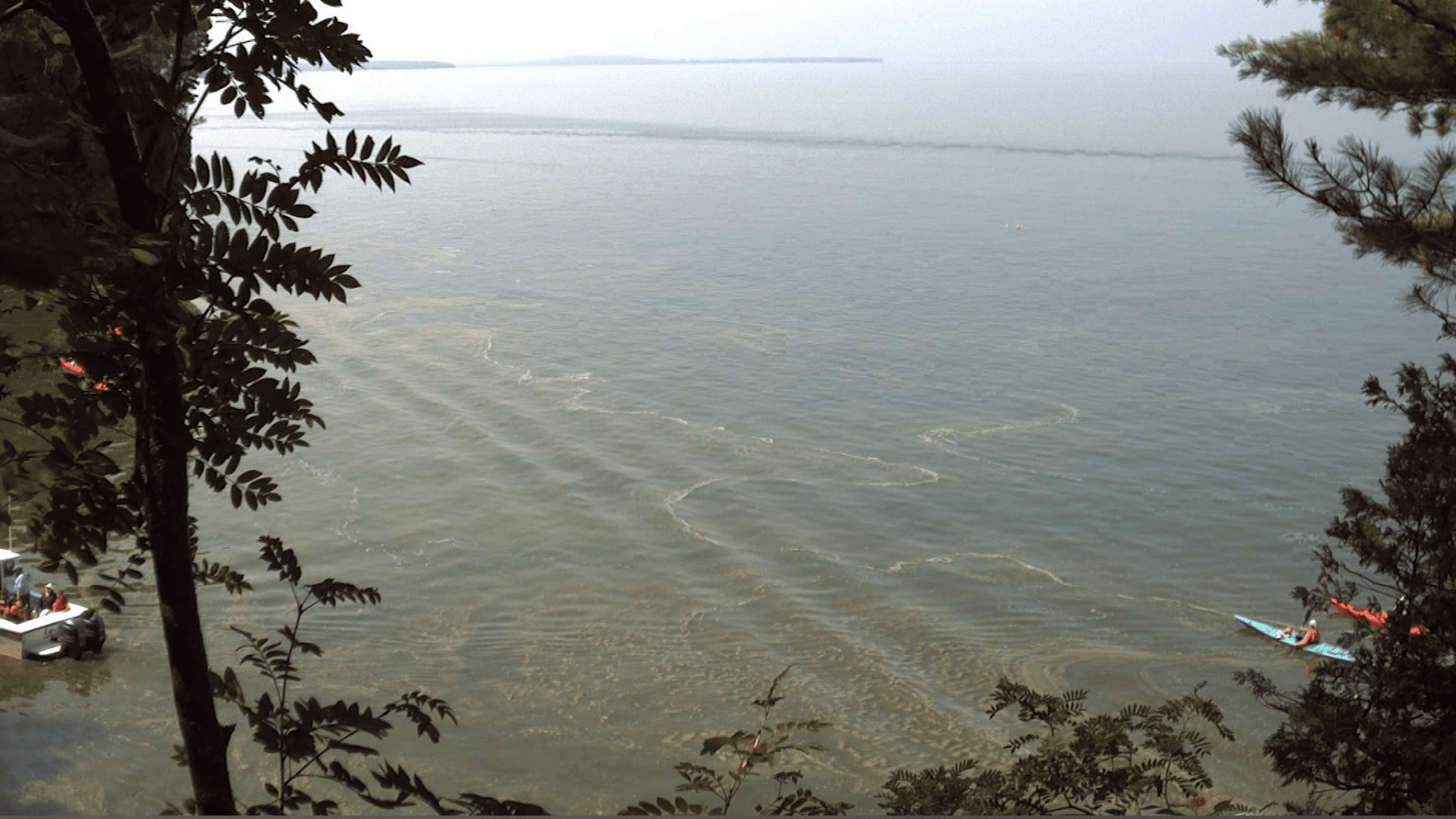Harmful Algal Blooms growing along the shores in Lake Superior
[anvplayer video=”5189054″ station=”998130″]
According to the Environmental Protection Agency, the average surface water temperature of the Great Lakes are rising. Over the past couple of years, Lake Superior’s warmer temperatures on the surface have also increased harmful Algal blooms.
Jordan Murray, A harmful algal bloom epidemiologist with the University of Wisconsin-Madison and the Wisconsin Department of Health, said the DNR is looking to prevent the spread of Cyanobacteria. “One method is to reduce the nutrients in water bodies,” Murray said.
The reason why the DNR is looking to prevent Cyanobacteria is due to the the health and environmental risks. “Normally low levels of native blue green algae grow to high concentrations and blooms. And you can do this by reducing the use of phosphates containing fertilizers. You can plant natural vegetation around ponds and lakes to help filter runoff.”
However, there are a lot of algae lookalikes that are mistaken for Blue Green Algae, like duckweed, or pollen. “The type of blue green algae toxin that we’re dealing with, a higher concentration could be more harmful,” Murray said.
While harmful Algal Blooms have been found in Lake Superior, the concentrations did not have significant health impacts. Although Murray said, people need to be careful swimming, or boating in waters with Blue Green Algae.

“If someone ingests or swallows water with toxins in it, they could experience gastrointestinal symptoms like cramps, nausea, diarrhea, vomiting, things like that. And if they inhale toxins, typically we’ll see people develop symptoms that are similar to allergies or the flu.”
Cyanobacteria, is not only a concern for people, but also the environment, marine life, and pets. “This year in Wisconsin, we’ve been experiencing a drought for a lot of the summer and really high temperature. So those two combined really promote the growth of cyanobacteria,” Murray said.
If you have exposure to Blue Green Algae, do not hesitate to call your local health department. “We really rely on and encourage people to report blue green algae related illnesses,” Murray said.
Also it’s highly recommended people report algal blooms, Blue-Green algae blooms can be reported to DNRHABS@wisconsin.gov. The report should also include the location of the bloom, the name of the water body, nearest town, county, the size and duration of the bloom, and overall and close-up photographs for verification. “We can learn more about the kinds of signs and symptoms risk factors and health outcomes associated with harmful algal bloom or blue green algae exposure,” Murray said.
For more information about Harmful Algal Bloom you can look here. For other stories in Wisconsin you can look here.